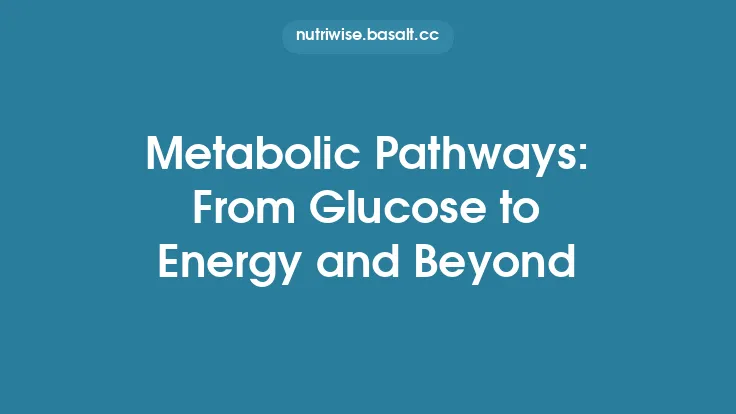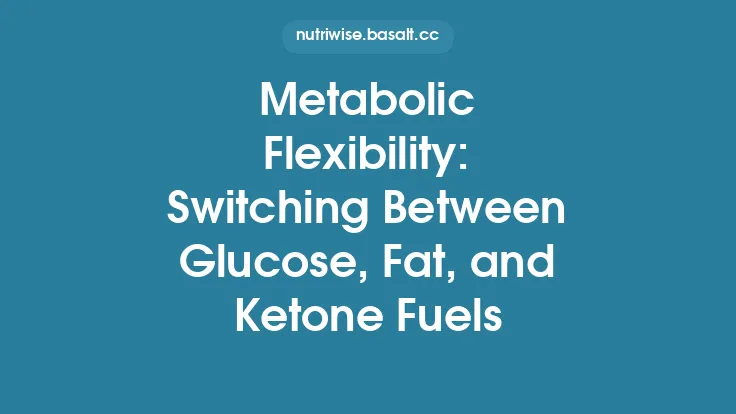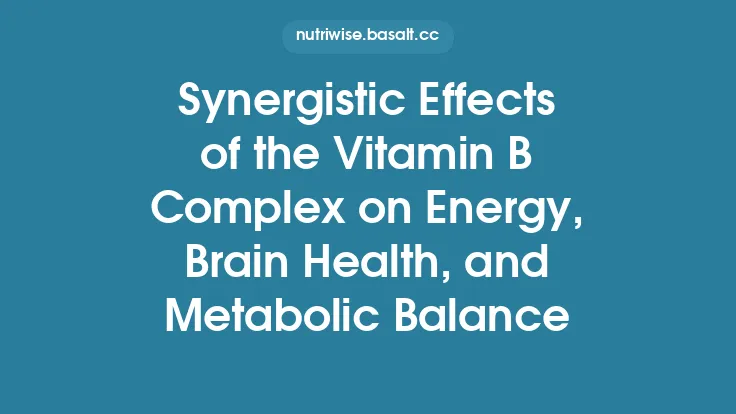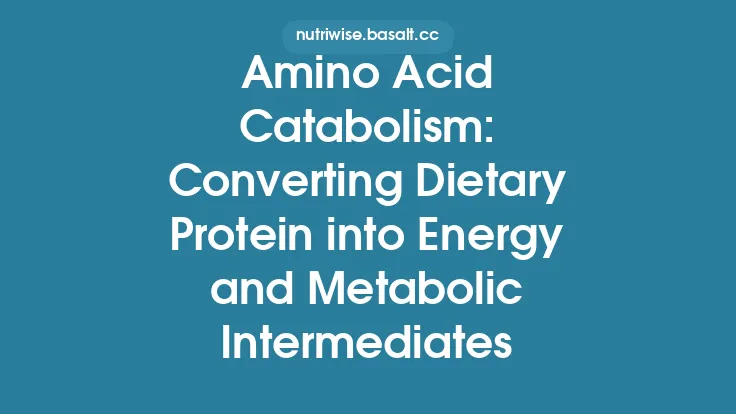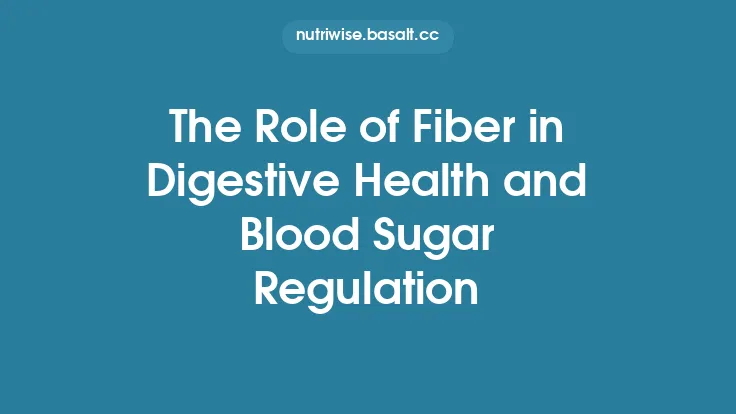The human body constantly balances the influx of nutrients from meals with the energetic demands of tissues, and this balance is orchestrated by a sophisticated network of hormones. When a meal is consumed, the pancreas releases insulin, signaling cells to take up glucose, store excess nutrients, and suppress catabolic processes. In the hours between meals, glucagon rises, prompting the liver to release glucose and mobilize stored fuels. Yet insulin and glucagon are only the most prominent members of a broader endocrine ensemble that includes catecholamines, cortisol, growth hormone, thyroid hormones, incretins, and adipokines. Together, these signals fine‑tune the activity of key metabolic enzymes, dictate the transcription of metabolic genes, and coordinate inter‑organ communication to ensure that energy supply matches demand under varying physiological conditions such as rest, exercise, stress, and growth. Understanding how these hormones interact provides a comprehensive view of metabolic regulation that extends far beyond the simple “insulin‑low, glucagon‑high” paradigm.
Insulin Signaling: From Receptor Activation to Metabolic Outcomes
Insulin binds to the α‑subunits of the insulin receptor (IR), a tyrosine kinase that autophosphorylates its β‑subunits. This creates docking sites for insulin receptor substrates (IRS proteins), which become phosphorylated on tyrosine residues. The phosphorylated IRS proteins recruit phosphoinositide 3‑kinase (PI3K), leading to the production of phosphatidylinositol‑(3,4,5)-trisphosphate (PIP₃) at the plasma membrane. PIP₃ activates 3‑phosphoinositide‑dependent protein kinase‑1 (PDK1) and subsequently Akt (also known as protein kinase B).
Key metabolic actions of Akt
- Glucose uptake – Akt phosphorylates and inactivates the AS160 (TBC1D4) protein, allowing the GLUT4 glucose transporter to translocate to the cell surface in muscle and adipose tissue.
- Glycogen synthesis – Akt phosphorylates and inhibits glycogen synthase kinase‑3 (GSK‑3), relieving inhibition of glycogen synthase and promoting glycogen storage in liver and muscle.
- Lipogenesis – Akt stimulates the mechanistic target of rapamycin complex 1 (mTORC1), which enhances the activity of sterol regulatory element‑binding protein‑1c (SREBP‑1c). SREBP‑1c drives transcription of fatty‑acid synthase (FAS) and acetyl‑CoA carboxylase (ACC), favoring de novo lipogenesis.
- Protein synthesis – Through mTORC1, Akt promotes translation initiation via phosphorylation of 4E‑BP1 and S6K1, supporting anabolic growth.
Insulin also activates the phosphatase protein phosphatase 1 (PP1), which directly dephosphorylates and activates glycogen synthase, and it suppresses hepatic gluconeogenic gene expression (PEPCK, G6Pase) via the transcription factor FOXO1. When Akt phosphorylates FOXO1, the transcription factor is excluded from the nucleus, reducing glucose production.
Glucagon Signaling: Mobilizing Stored Energy
Glucagon binds to the G protein‑coupled glucagon receptor (GCGR) on hepatocytes, activating the Gαs subunit and stimulating adenylate cyclase. The resulting rise in cyclic AMP (cAMP) activates protein kinase A (PKA).
Principal metabolic effects of PKA
- Glycogenolysis – PKA phosphorylates and activates phosphorylase kinase, which in turn phosphorylates glycogen phosphorylase, accelerating glycogen breakdown. Simultaneously, PKA phosphorylates and inhibits glycogen synthase, preventing re‑synthesis.
- Gluconeogenesis – PKA phosphorylates CREB (cAMP response element‑binding protein), which together with co‑activators such as CRTC2 drives transcription of gluconeogenic enzymes (PEPCK, G6Pase). PKA also phosphorylates and activates the transcription factor FOXO1, enhancing gluconeogenic gene expression.
- Lipolysis (indirect) – While glucagon’s direct effect on adipose tissue is modest in humans, hepatic PKA activity promotes the production of ketone bodies during prolonged fasting by stimulating mitochondrial HMG‑CoA synthase.
Glucagon signaling is tightly counter‑regulated by insulin‑mediated activation of phosphodiesterases (PDEs) that hydrolyze cAMP, thereby attenuating PKA activity and restoring the fed‑state metabolic profile.
Catecholamines: Rapid, Stress‑Induced Metabolic Shifts
Epinephrine and norepinephrine act through β‑adrenergic receptors (β‑AR) on liver, muscle, and adipose tissue, coupling to Gαs and raising intracellular cAMP, much like glucagon. In skeletal muscle, β₂‑AR activation also engages the Gαi pathway, leading to phospholipase C (PLC) activation and intracellular calcium release.
- Muscle glycogenolysis – PKA phosphorylates phosphorylase kinase, rapidly mobilizing glucose‑6‑phosphate for immediate ATP production during “fight‑or‑flight.”
- Adipose lipolysis – PKA phosphorylates hormone‑sensitive lipase (HSL) and perilipin, exposing stored triacylglycerols to lipases and releasing free fatty acids (FFAs) into circulation.
- Thermogenesis – In brown adipose tissue, β₃‑AR activation stimulates cAMP‑PKA signaling that up‑regulates uncoupling protein‑1 (UCP‑1) transcription, increasing heat production.
Catecholamine signaling is transient, allowing swift adaptation to acute stress, whereas insulin and glucagon provide longer‑term metabolic control.
Cortisol and Growth Hormone: Modulating Metabolism Over Hours to Days
Cortisol (a glucocorticoid) binds intracellular glucocorticoid receptors (GR), translocates to the nucleus, and regulates gene transcription. Its metabolic actions include:
- Gluconeogenesis – Up‑regulation of PEPCK, G6Pase, and pyruvate carboxylase, enhancing hepatic glucose output.
- Protein catabolism – Induction of muscle proteolysis, providing amino acids for gluconeogenesis.
- Lipolysis – Promotion of adipose triglyceride breakdown, increasing circulating FFAs that serve as substrates for hepatic gluconeogenesis and ketogenesis.
Growth hormone (GH) signals through the growth‑factor‑like receptor (GHR), activating Janus kinase 2 (JAK2) and STAT5. GH’s metabolic effects are largely indirect, mediated by insulin‑like growth factor‑1 (IGF‑1) and by antagonizing insulin’s actions:
- Lipolysis – GH stimulates hormone‑sensitive lipase and reduces lipoprotein lipase activity, favoring mobilization of fat stores.
- Gluconeogenesis – GH enhances hepatic glucose production, partly by increasing substrate availability (glycerol, amino acids).
Both cortisol and GH become prominent during prolonged fasting, chronic stress, or intense exercise, ensuring a sustained supply of glucose and FFAs when insulin levels are low.
Thyroid Hormones: Setting the Basal Metabolic Rate
Triiodothyronine (T₃) and thyroxine (T₄) act via nuclear thyroid hormone receptors (TRα, TRβ) to modulate transcription of a wide array of metabolic genes. Key actions include:
- Up‑regulation of Na⁺/K⁺‑ATPase and mitochondrial oxidative enzymes, raising basal energy expenditure.
- Stimulation of carbohydrate metabolism – Increased expression of GLUT1 and GLUT4, and enhanced activity of glycolytic enzymes, facilitating glucose utilization.
- Promotion of lipolysis – Induction of adipose triglyceride lipase (ATGL) and HSL, contributing to higher circulating FFAs.
Thyroid status profoundly influences how other hormones (insulin, glucagon) affect metabolic pathways, with hyperthyroidism amplifying catabolic responses and hypothyroidism dampening them.
Incretins and Gut‑Derived Hormones: Linking Digestion to Metabolism
After nutrient ingestion, enteroendocrine cells release glucagon‑like peptide‑1 (GLP‑1) and glucose‑dependent insulinotropic polypeptide (GIP). These incretins potentiate glucose‑stimulated insulin secretion (the “incretin effect”) and exert additional metabolic actions:
- GLP‑1 – Enhances β‑cell proliferation, suppresses glucagon release, slows gastric emptying, and promotes satiety via central pathways.
- GIP – Stimulates insulin release and, in adipose tissue, facilitates lipid storage by activating lipoprotein lipase.
Other gut hormones, such as peptide YY (PYY) and cholecystokinin (CCK), modulate appetite and gastric motility, indirectly influencing the hormonal milieu that governs nutrient handling.
Adipokines: The Endocrine Role of Fat
Adipose tissue secretes leptin, adiponectin, resistin, and several cytokines that communicate energy status to the brain and peripheral organs.
- Leptin – Signals sufficient energy stores to the hypothalamus, reducing food intake and increasing sympathetic outflow, which can raise glucagon and catecholamine activity.
- Adiponectin – Enhances insulin sensitivity by activating AMP‑activated protein kinase (AMPK) in muscle and liver, promoting fatty‑acid oxidation and glucose uptake.
- Resistin and pro‑inflammatory cytokines (TNF‑α, IL‑6) – Contribute to insulin resistance by interfering with insulin receptor signaling pathways.
These adipokines integrate long‑term energy balance with acute hormonal responses, shaping the overall metabolic phenotype.
Cross‑Talk and Integration: The Hormonal Network in Action
Metabolic regulation is not a series of isolated pathways; rather, it is a dynamic network where signals converge, diverge, and modulate each other. Some illustrative examples:
- Insulin–glucagon antagonism – Insulin activates phosphodiesterases that lower cAMP, directly opposing glucagon‑driven PKA activity.
- Insulin–catecholamine interaction – In skeletal muscle, insulin‑stimulated Akt can phosphorylate and inhibit components of the β‑adrenergic cascade, tempering catecholamine‑induced glycogenolysis.
- AMPK as a metabolic hub – Activated by low energy (high AMP/ATP) and by adiponectin, AMPK phosphorylates and inhibits ACC, reducing malonyl‑CoA and thereby relieving inhibition of carnitine palmitoyltransferase‑1 (CPT‑1), which promotes fatty‑acid oxidation. AMPK also antagonizes mTORC1, counterbalancing insulin‑driven anabolic signaling.
- FOXO transcription factors – Integrated nodes where insulin (via Akt) and glucagon/cortisol (via PKA/PKC) exert opposite effects on nuclear localization and transcriptional activity, thereby fine‑tuning gluconeogenic and oxidative‑stress gene programs.
Understanding these intersections is essential for appreciating how the body maintains metabolic homeostasis across a spectrum of nutritional and physiological states.
Hormonal Dysregulation and Metabolic Disease
When the delicate balance of these hormones is perturbed, chronic metabolic disorders can arise:
- Insulin resistance – Often driven by excess FFAs, inflammatory adipokines, and hyperinsulinemia, leading to impaired GLUT4 translocation, reduced Akt signaling, and unchecked hepatic gluconeogenesis.
- Hyperglucagonemia – Observed in type 2 diabetes, contributes to excessive hepatic glucose output despite elevated insulin.
- Cortisol excess (Cushing’s syndrome) – Promotes visceral adiposity, insulin resistance, and dyslipidemia.
- Thyroid dysfunction – Hyperthyroidism can precipitate muscle wasting and glucose intolerance; hypothyroidism is associated with weight gain and lipid abnormalities.
These pathophysiological states underscore the importance of coordinated hormonal control for optimal metabolic function.
Therapeutic Implications: Targeting Hormonal Pathways
Modern pharmacology leverages knowledge of hormonal regulation to treat metabolic disease:
- GLP‑1 receptor agonists (e.g., exenatide, semaglutide) amplify the incretin effect, improve insulin secretion, suppress glucagon, and promote weight loss.
- SGLT2 inhibitors indirectly affect hormonal balance by increasing urinary glucose excretion, leading to modest reductions in insulin and elevations in glucagon, which together improve glycemic control and cardiovascular outcomes.
- Selective glucagon receptor antagonists are under investigation to curb hepatic glucose production in diabetes.
- AMPK activators (e.g., metformin) improve insulin sensitivity and reduce hepatic gluconeogenesis, partly by inhibiting mTORC1 and enhancing fatty‑acid oxidation.
- Thyroid hormone analogs aim to raise basal metabolic rate without cardiac side effects, offering potential obesity treatments.
A nuanced appreciation of how these agents modulate the broader hormonal network is essential for optimizing therapy and minimizing adverse effects.
Concluding Perspective
Hormonal regulation of metabolism is a multilayered, highly integrated system that extends far beyond the classic insulin‑glucagon axis. By coordinating rapid signaling events (e.g., Akt, PKA, AMPK) with longer‑term transcriptional programs (e.g., SREBP‑1c, FOXO, thyroid‑responsive elements), the endocrine network ensures that carbohydrate, lipid, and protein substrates are appropriately stored, mobilized, or oxidized in response to feeding, fasting, stress, and growth. The interplay among pancreatic hormones, catecholamines, glucocorticoids, growth hormone, thyroid hormones, gut‑derived peptides, and adipokines creates a flexible yet robust framework that maintains energy homeostasis. Disruptions in any component can cascade into metabolic disease, highlighting the clinical relevance of this regulatory web. Continued research into the precise molecular crosstalk and the development of therapeutics that fine‑tune these pathways promise to deepen our ability to manage and prevent metabolic disorders while preserving the elegant balance that underlies human nutrition and health.
